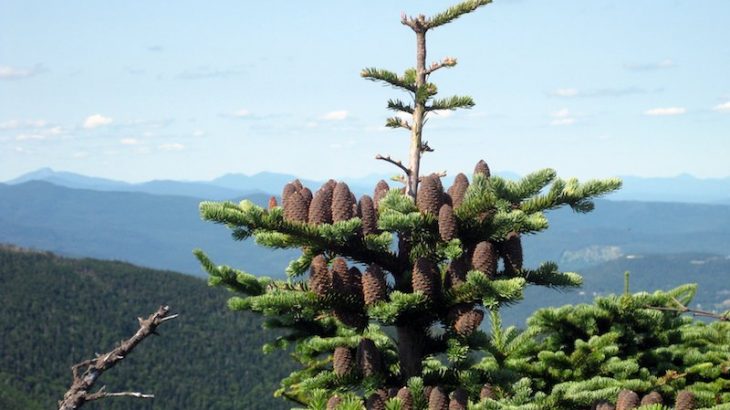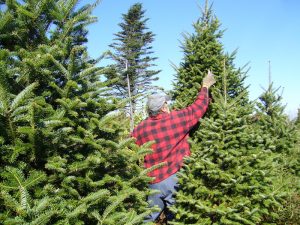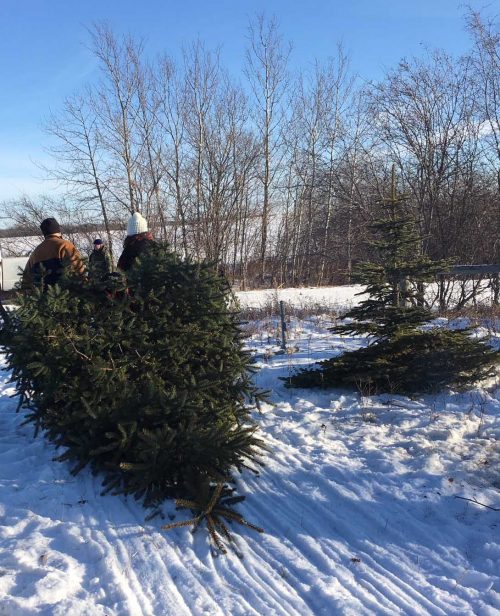Dan Kraus, Nature Conservancy of Canada, guest contributor
People living in the Northern Hemisphere have brought trees and boughs into their homes during the winter for thousands of years. The evergreens that we decorate with during Christmas can represent a celebration of holidays and a reminder that spring will come again.
I’m a Christmas tree traditionalist, and will never give up the ancient ritual of bringing a fresh tree into our home. Each year, Canada’s 1,872 Christmas tree farms produce over three million pine, spruce and fir trees. In addition to supporting Canadian famers, Christmas tree plantations provide habitat for songbirds, including chipping sparrow and American robin.
But what happens to your Christmas tree after the holidays?
We’ve come a long way since the days when Christmas trees were dumped into landfills. Most municipalities now have programs that chip and compost old trees. Some conservation groups even collect trees to create fish habitat or stop erosion along streams.
These are great ways to recycle your Christmas tree, but you can also let nature recycle your tree in your own backyard. It takes a little longer than hauling it to the curb, but you can give your tree a second life by giving it as a gift to wildlife. This small act of nature conservation can also help your family learn three lessons about how, even in death, trees are an important part of life and renewal in our Canadian forests.
Lesson 1: Gimme shelter
The first step in recycling your tree is easy. Just put it anywhere in your backyard until spring. Many of us do this anyway when we miss the pick-up for municipal tree recycling.
Your Christmas tree will enrich your backyard ecosystem right away. Evergreens provide important shelter for birds on cold nights and during storms and as a safe place to rest while they visit your feeder.
You can even use your old tree as a bird (and probably squirrel) feeder by redecorating it with pine cones filled with peanut butter, strings of peanuts and suet.
Lesson 2: Downed woody debris
Come spring, your tree will probably have lost most of its needles and be looking like, well, a dead tree. It’s time to put your tree to rest and help out your flowers by mimicking what happens with dead trees in forests.
Scientists call trees and branches on the forest floor “downed woody debris” (the cool scientists just say DWD). This debris is not trash. It is an important indicator of healthy forests by providing habitat, sheltering wildflowers, holding moisture and helping build the soil.
You can recreate DWD in your gardens. Cut off the tree’s branches and lay them where spring flowers are starting to emerge. Lay the trunk on soil and it will provide a home for many backyard animals. Toads will find shelter under the log, and insects, including pollinators such as carpenter bees, will burrow into the wood.
Lesson 3: Spruce to soil
By fall, you’ll start to witness the final stage in the life of your Christmas tree, as the branches and trunk begin to decompose and turn into soil. Many of our Christmas trees, particularly spruce and balsam fir, have very low rot resistance and break down quickly when exposed to the elements. The more contact the cut branches and trunk have with the ground, the faster it will start to be recycled by fungi, insects and bacteria.
After a few years, not much will remain of your tree. The needles and branches will have returned to soil, and the trunk will be soft with rot. It will just be a memory of your new tradition of backyard Christmas tree recycling.
~30~






